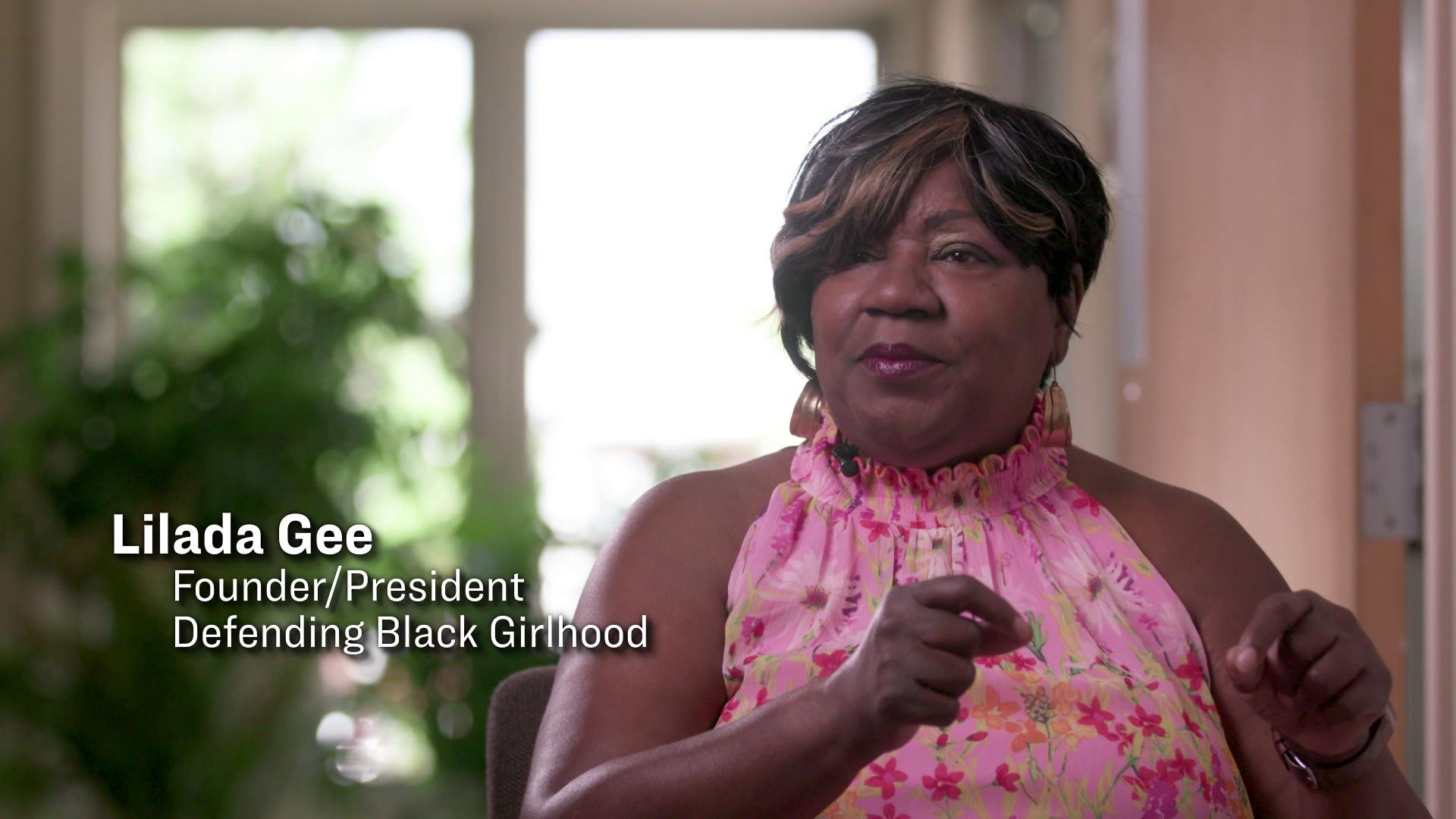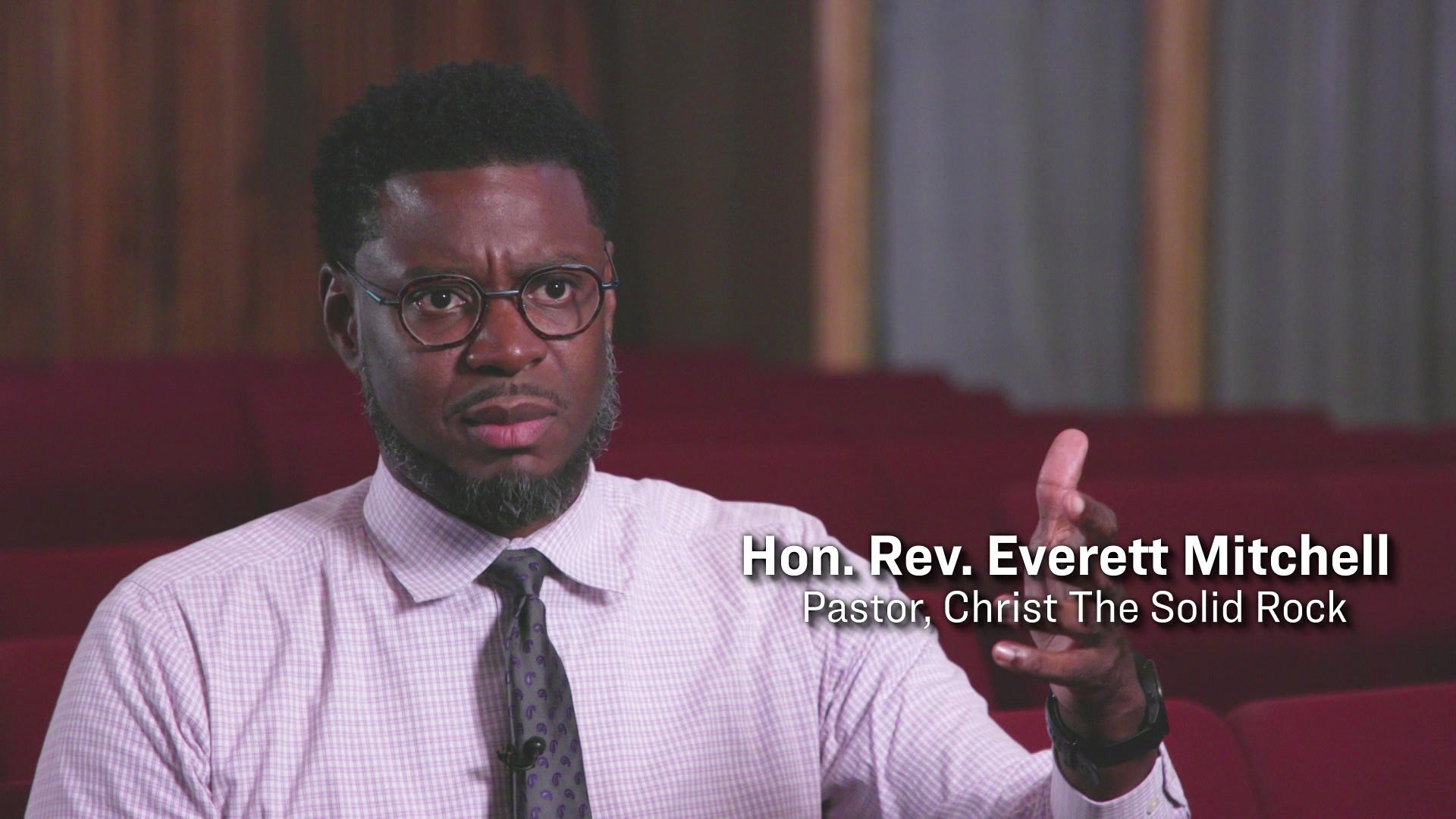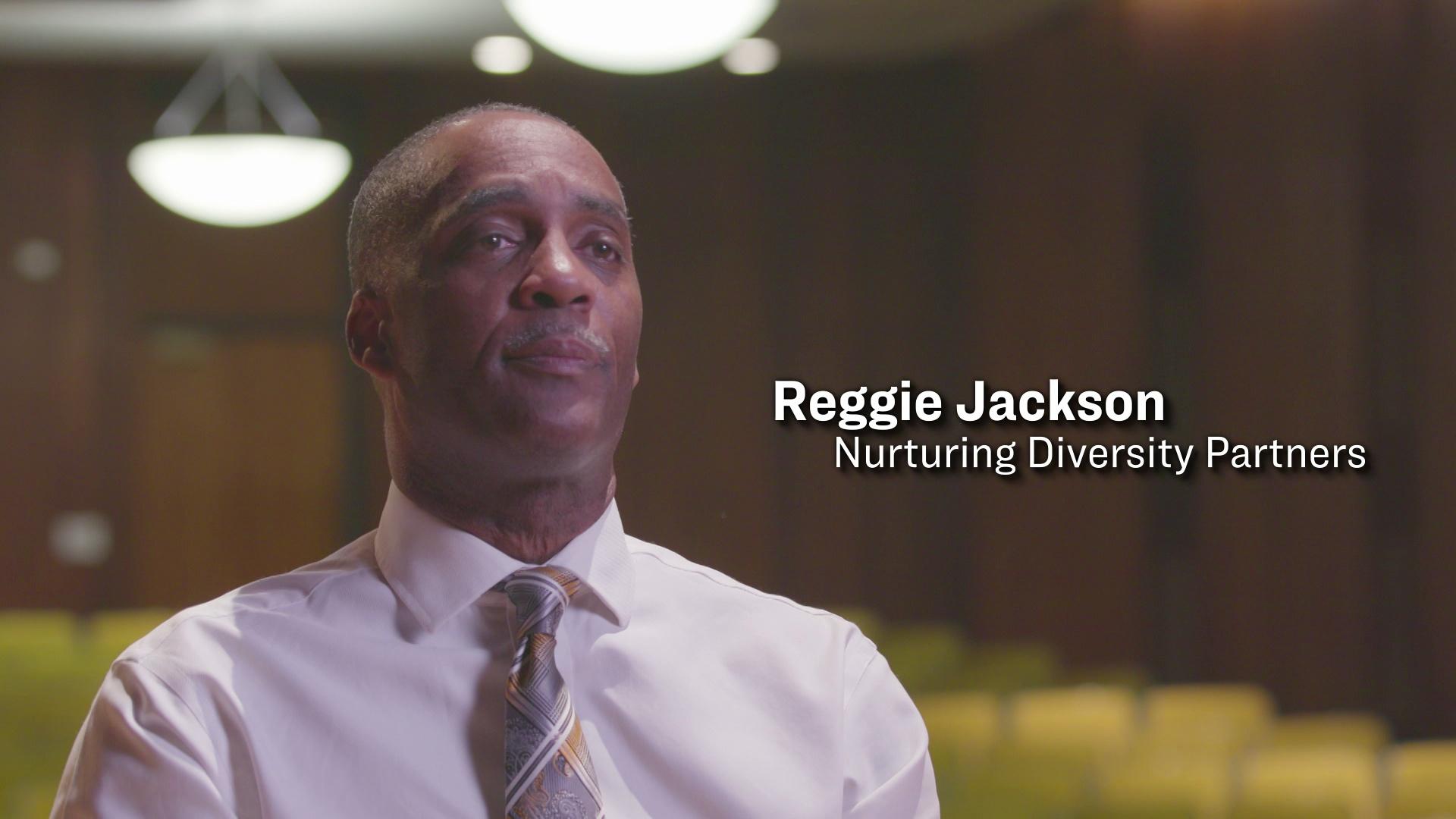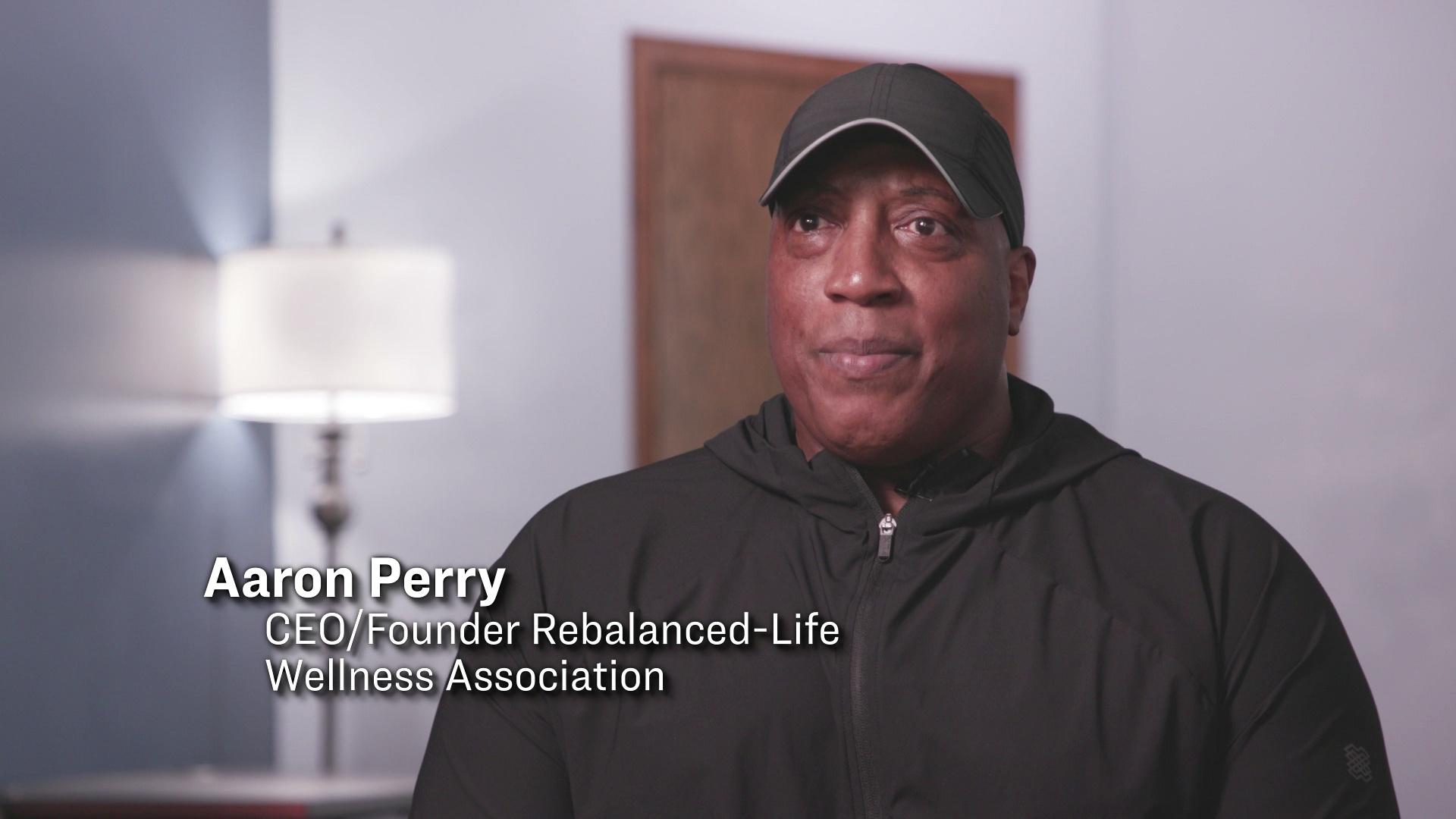What 'urban renewal' meant for Milwaukee's Black residents
A series of demolition and construction projects labeled "urban renewal" destroyed Black neighborhoods in Milwaukee, sparking the open housing movement in the 1960s to end housing discrimination.
By Nathan Denzin | Here & Now
October 10, 2023 • Southeast Region
VIDEO TRANSCRIPT
Editor's note: If you have watched this or any other Wisconsin in Black & White report, please share your feed back in a survey at pbswisconsin.org/wibw-survey. Thank you.
Milwaukee resident:
People here are suffering now. What do you wanna do about it now? What are you gonna do about it now? How many homes do you have available now for us?
Nathan Denzin:
Bulldozers rolled into Milwaukee in the 1960s, leveling Black neighborhoods in the name of urban renewal. The projects often razed successful Black neighborhoods like Bronzeville in downtown Milwaukee.
Theresa Garrison:
Well, you had homes with families and with kids, and we were all just playing around.
Nathan Denzin:
Theresa Garrison has lived in the Bronzeville community for 70 years.
Theresa Garrison:
So I'd say it was family-oriented and everybody knew everybody.
Nathan Denzin:
Bronzeville enjoyed a flourishing business district in the early 1960s, from banks to movie theaters to grocery stores.
Theresa Garrison:
It was just a booming shopping center.
Nathan Denzin:
But in the mid 1960s, the federal government started giving grants for cities to update infrastructure. The goal of urban renewal was to construct new housing and modern interstates. Those projects often destroyed Black neighborhoods in the process.
Documentary narrator:
Fred Durra and his family have lived in this house for eight years, but they live in the K3 urban renewal area and they have to move now. There are 13 of them, and they are Black and poor, so they won't be able to find a decent home on their own.
Theresa Garrison:
As far as urban renewal, I'll just say it was urban tragedies.
Nathan Denzin:
In just eight years between 1960 and 1968, more than 7,500 homes and businesses were demolished in Milwaukee. Interstate 43 was the largest and most visible urban renewal project in Milwaukee and was built directly through Bronzeville.
Ranell Washington:
The addition of I-43 decimated the neighborhood.
Elmer Moore, Jr.:
Friendships that were very close to having a family connection were disrupted and destroyed, and a lot of families never recovered.
Nathan Denzin:
Elmer Moore, Jr. and Ranell Washington play critical roles in the Wisconsin Housing and Economic Development Authority.
Elmer Moore, Jr.:
What does that do to everyone else's sense of security? I wouldn't be able to sleep that night, thinking, "What are they gonna do to my home next?"
Ranell Washington:
Everybody deserves to have a house.
Theresa Garrison:
When they start tearing a community apart, there was nothing to do. You didn't have anything.
Nathan Denzin:
The Black community was now facing three forms of discrimination at once. Restrictive covenants prohibited them from living in certain areas, redlining prevented them from getting mortgages, and urban renewal destroyed their neighborhoods.
Kurt Paulsen
Black households that were displaced by highways and urban renewal had limited housing options in the city because of discrimination and exclusionary zoning in the suburbs.
Nathan Denzin:
Kurt Paulsen is a historian of urban planning at UW-Madison, who says decades of discrimination built to massive protest.
Kurt Paulsen
No surprise that you get significant political pushback and rebellion amongst African Americans in disinvested neighborhoods.
Dr. Christy Clark-Pujara:
We tend to think about the civil rights movement, like the institution of slavery, as something that is uniquely southern, and it was not.
Nathan Denzin:
Dr. Christy Clark-Pujara, a UW-Madison history professor, also works with the Madison organization Nehemiah. She's an instructor in its "Justified Anger: Black History for a New Day" course. The nine-week course teaches the community about race, history, and justice.
Dr. Christy Clark-Pujara:
You can just look at the civil rights struggle for open housing, for instance, in Milwaukee.
Nathan Denzin:
The pushback in Milwaukee started in the 1960s when Vel Phillips was elected to the city council. Phillips was both the first woman and the first Black person elected to a city office. She led the charge to desegregate Milwaukee's housing.
Vel Phillips:
These cats are just too dumb, just too dumb to know when they have something going for 'em.
Kurt Paulsen
And they argued in favor of reinvestment in Black neighborhoods, but also what we today would call fair housing or open housing.
Nathan Denzin:
Fair housing is the idea that discrimination of any kind in the sale or rental of housing should be prohibited. When Phillips first introduced her fair housing ordinance in 1962, the rest of the council overwhelmingly rejected it.
Kurt Paulsen
It was one of the first proposed in the country and it went down to defeat 18 to 1. Only Vel Phillips voted for it.
Protester:
Y'all have done this #### for over 200 years, telling us what felt good for us.
Nathan Denzin:
Over the next four years, the ordinance was shot down four more times, each time by the 18 to 1 margin. By the summer of 1967, Milwaukee reached its boiling point. A group of young Black activists decided to rally their community around a common goal. Their mindset:
Reggie Jackson:
We are going to march and demand that the local government, the city of Milwaukee, passes a fair housing ordinance that has some teeth to it.
Nathan Denzin:
Reggie Jackson is a community leader in Milwaukee.
Reggie Jackson:
So they marched for 200 consecutive days. The first two days they marched, they were met crossing this bridge in Milwaukee called the 16th Street Viaduct, which separates the north side from the south side. They were met by an angry crowd of thousands of white people, throwing bricks and bottles and bags of feces.
Nathan Denzin:
Despite the angry white crowds, protestors kept up the pressure.
Reggie Jackson:
Anybody that knows anything about the weather in Milwaukee, marching in December, January, February when it's bitterly cold, snow, blizzards, all that stuff, ice storms, they continued to march.
Nathan Denzin:
Protests continued until March 1968. Less than a month later, Dr. Martin Luther King, Jr. was assassinated in Memphis. As unrest grew after the murder of Dr. King, the federal government felt pressure to pass an open housing law.
Reggie Jackson:
The federal government finally passed the Federal Fair Housing Act a week after Dr. King's assassination.
Kurt Paulsen:
But that's after 40 years of segregation. And a law prohibiting discrimination does not address the deep structure of segregation that was already built into the urban landscape.
Nathan Denzin:
As an expert on the deep and lasting scars of discrimination and forced segregation, Clark-Pujara says understanding that past is critical to working towards a better future.
Dr. Christy Clark-Pujara:
So now we're in a situation where things are very lopsided, but we can address them as a society if we choose to.
Nathan Denzin:
For Here & Now, I'm Nathan Denzin.
Editor’s note: If you have watched this or any other Wisconsin in Black & White report, please share your feed back in a survey at pbswisconsin.org/wibw-survey. Thank you.
 Passport
Passport











Follow Us